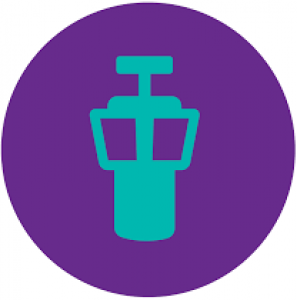Hi there! And welcome back!
In this blog, I’d like to talk about some of the control towers which have already been developed. This might give you an idea what others have already done, and how you can benefit from that. After all, others’ ideas might make your own even better.
To start off with, I’d like to discuss the company DSV. DSV is a Danish logistics service provider who already has developed their own control tower. The control tower of DSV is basically and end-to-end control tower, with a focus on the transportation links in between the shackles of the supply chain. Basically, their control tower is operating on three different levels within the company: strategical, tactical and operational. All of these three levels come with different activities, such as the planning of the company’s logistics strategy, the choice of carriers and the daily transport planning.
Since DSV already has their control tower in place for several years, they also have opened themselves up to managing other companies’ control tower. To be able to do this, they offer their clients a tailor-made solution. This consists of pre-made building blocks from which client can choose which one he would like to see back in their own control tower.
Also, the computer giant Dell has got his own control tower, although, they like to call it their “command center”. As opposed to the DSV control tower, the Dell command center is very much focussed on the client. The main goal of the control tower is to give timely information to their clients in case of any emergencies, natural disasters and the like. Also, within their control centers, they have teams of supply chain experts who make contingency plans for disruptions in the supply chains which might affect their customers.
Another company which is using a control tower is Agilent. This company is a manufacturer of electrical measurement equipment. In 2011, when a massive flood hit Thailand, many problems arose for Agilent, as many of their suppliers were based in the stricken area. However, fortunately for the company, they had decided a year before that, a control tower should be set up.
This company is a manufacturer of electrical measurement equipment. In 2011, when a massive flood hit Thailand, many problems arose for Agilent, as many of their suppliers were based in the stricken area. However, fortunately for the company, they had decided a year before that, a control tower should be set up.
Agilent’s control tower is primarily focussing on the inbound side of their operations. It started by the fact that they did not have any insight into the stock levels throughout their supply chain. To gain insight into this, the company decided that the stock levels in as many nodes of the chain should be known. Ultimately, in the case of disruptions somewhere within the chain, Agilent could with this, take the inventory elsewhere. Also, because the company knows exactly where and how much stock is located in the chain, it is better able to tell their clients and sales representatives if and when they can deliver. One way of making a customer happy.
As you could have read by now, is that there are already several companies who have set up their very own control tower. And although the three examples mentioned in this blog are very different from each other, they also have a lot in common. But the most important and coherent factor within these three control towers is the fact that they provide visibility. Either to clients, suppliers or to the company itself. And in the end, this is what a control tower excels in. I hope to see you again in my next blog!
See Y’all!
